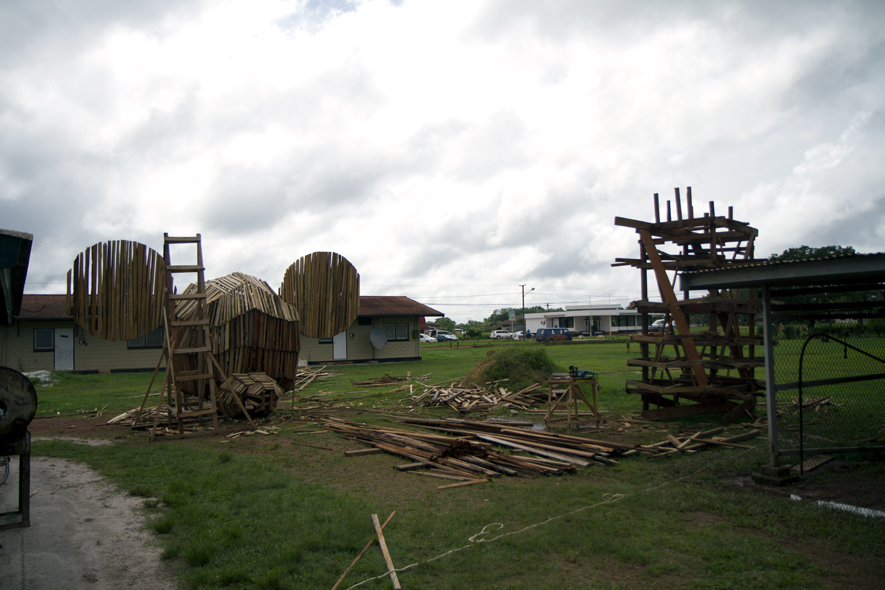Year :
Size :
Material :
Location :
Context:
Many thanks to:
Monument for transition is a monument for the constant changes that the people of Moengo are subject to. It’s as well a monument for changes in the past as for changes that are happening on this very moment. It’s a monument for small changes, that are hardly noticable, and huge changes with great concequenses. It’s a monument for nature, that rapidly changes all unused objects into jungle by covering it with moss, bushes and tropical flowers. It’s a monument for Toyota, that changed the streetscape drastically by filling up the streets with their cars. And it’s a monument for the Chinese that came to Suriname and took over almost all of the supermarkets. It’s a monument for the enormous amount of schoolchildren that grow up in Moengo and are developping their talents and eventually might use these talents to make even more transitions to the town. But it’s also a monument for the enormous transition that took place after the civil war. A transition that is still having it’s effect on the people. And at last there are the transitions that are still to come. What transition will the current government bring? And what transition will take place after Suralco, the mining company where many Moengonese are employed, leaves the city?
Wouter Klein Velderman wanted to use an existing icon that stands for a certain kind of transition. One of the icons that changed Western society a great lot, is the Walt Disney cartoon Mickey Mouse. Therefor Klein Velderman asked the people of Moengo and children from the surrounding villages to help him rebuilding the Mickey Mouse cartoon, but this time using techniques, materials and to add (woodcarving) elements from and about their own culture.
Lot’s of people somehow got involved into the project. Ras2, a very gifted assistant, woodcarver and musician was helping the whole three months. The children from the surrounding villages Ofia Olo, Dantapu and Ricanau Mofo have created woodcarvings that have been added to the back of Mickeys legs. And visual artist David Linga came up with the idea to change Mickeys legs into two enormous totem poles, that depicts the history of the Moengonese habitants.
Monument for transition is initiated by Wouter Klein Velderman during a residency at the Tembe Art Studio in Moengo.
David Linga is one of the best woodcarvers of Surinam. I invited him for the project, and asked him if he could think of a way to turn the legs into totem poles. The legs are two tree trunks, both with a length of 12,5 meters. Linga chainsaw modelled them into a depiction of the habitants of Moengo through the years. Starting at the bottom, you can see the American, who discovered the existence of Bauxite in Moengo. Bauxite is the basic material for the production of aluminum. The Americans are wearing a shirt and a tie. That’s why on the right leg a tie is depicted. On top of the American we can see the Indian. They are on top of the American because they were the first habitants of Moengo. The Indians are wearing a kamisa. The first plantation workers of Moengo were the Javanese people. So David put them on top of the Indians. The Javanese wear a tai koto. And all the way on top there are the bosland creoles, they are now living in Moengo.The Bosland Creoles wear a pangi.
 |
| David Linga |
The children from the surrounding villages of Moengo: Ofia Olo, Dantapu and Ricanau Mofo have created woodcarvings that were added to the back of Mickeys legs.
















































